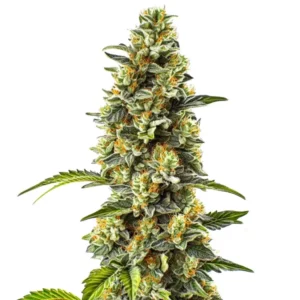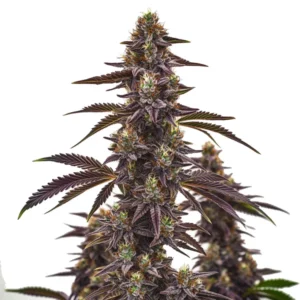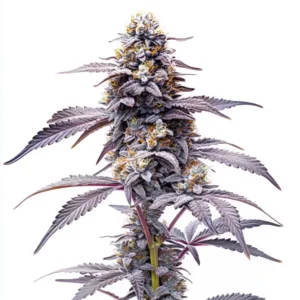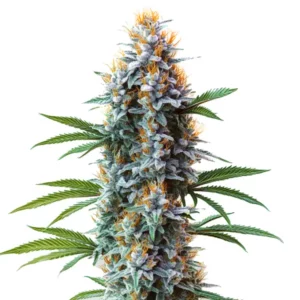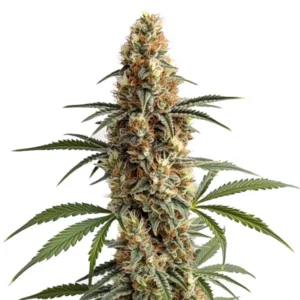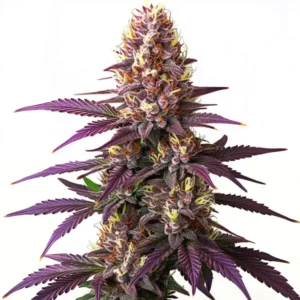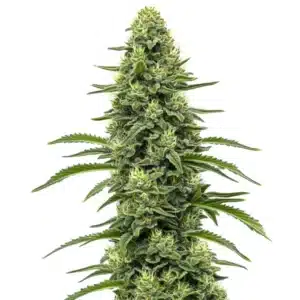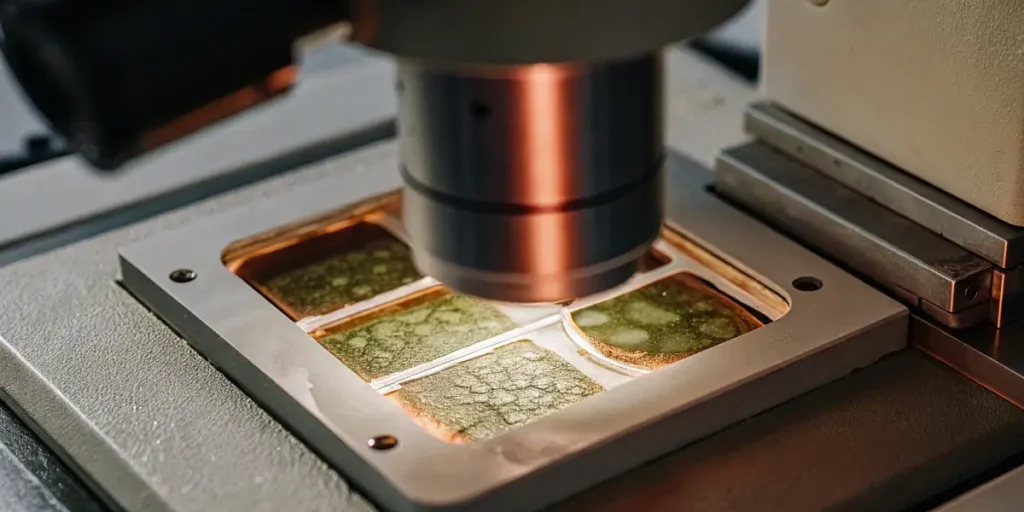
How Plants Convert Nitrate to Ammonia
Ever wonder why plants thrive in certain conditions? It’s all about how they manage nutrients, especially nitrogen. Nitrogen is vital for plant growth, and they get it from the soil in the form of nitrate. But plants can’t use nitrate directly. They need to convert it to ammonia first. This process is crucial for cannabis growers looking to optimize their crops.
Let’s break it down: plants take up nitrate from the soil. Then, through a series of steps, they transform it into ammonia. This ammonia is then used to build proteins and other essential molecules. Knowing this conversion can help you improve your cannabis growing techniques.
Recommended Strains
Chemdog #4
|
|
THC | 18% - 26% (Medium) |
|
|
Type | Feminized |
|
|
Yield | Medium |
|
|
Phenotype | 60% Indica / 40% Sativa |
Strawberry Cough
|
|
THC | 19% - 23% (Medium) |
|
|
Type | Feminized |
|
|
Yield | Medium |
|
|
Phenotype | 30% Indica / 70% Sativa |
For those cultivating cannabis, like the popular Chemdog #4, knowing how plants convert nitrate to ammonia can lead to healthier, more productive gardens. When plants efficiently convert nitrate, they grow stronger and yield better, making it easier for you to enjoy the fruits of your labor.
Nitrate to Ammonia Conversion in Plants
The nitrate to ammonia conversion in plants is a fascinating process. It begins with the uptake of nitrate ions from the soil. Once inside the plant, these ions are transformed into ammonia through a series of biochemical reactions. This conversion is not just a random occurrence; it’s a well-orchestrated series of events.
Key to this process are the enzymes involved in nitrate reduction. These enzymes facilitate the conversion, ensuring it occurs efficiently and effectively. For cannabis growers, ensuring your plants have access to these enzymes can make a big difference. Strains like Strawberry Cough thrive when nitrate-to-ammonia conversion is optimized.
Knowing how plants convert nitrate to ammonia involves recognizing the role of environmental factors. Light, temperature, and soil pH can significantly impact the efficiency of this conversion process. Adjusting these conditions to optimize enzyme activity can enhance plant health and growth.
The nitrate to ammonia conversion in plants is also influenced by soil microbiota. Beneficial microbes can enhance the availability of nitrate and support the biochemical pathway of nitrate assimilation. Cultivating a healthy soil ecosystem is crucial for promoting efficient nitrogen metabolism in plants.
The Biochemical Pathway of Nitrate Assimilation
The biochemical pathway of nitrate assimilation begins with nitrate reductase. This enzyme converts nitrate into nitrite. It’s the first step and sets the stage for the rest of the conversion process. Without nitrate reductase, plants would struggle to use the nitrogen available to them.
Next in line is nitrite reductase. This enzyme plays a critical role in converting nitrite into ammonia. It’s a delicate process, but when done right, it provides plants with the nitrogen they need to build proteins. For cannabis cultivators, ensuring your plants can perform this conversion efficiently means better growth and higher yields.
This pathway is tightly regulated by the plant’s internal signaling mechanisms. Hormones like cytokinins and auxins can modulate the activity of enzymes involved in nitrate reduction, influencing the overall efficiency of the conversion process. Knowing these hormonal interactions can help growers optimize plant nutrition.
Moreover, the biochemical pathway of nitrate assimilation is energy-dependent. Plants require ATP and reducing power in the form of NADPH to drive these enzymatic reactions. Ensuring your plants are photosynthetically active and have access to adequate light can support this energy-intensive process.
Promos & Deals
Plant Nitrogen Metabolism Process
The plant nitrogen metabolism process is essential for healthy growth. By converting nitrate to ammonia, plants manage their nitrogen needs effectively. This process ensures they have the necessary nutrients to develop and thrive, especially in nutrient-rich environments.
For cannabis growers, knowing the plant nitrogen metabolism process means you can better manage your plants’ needs. By providing the right conditions and nutrients, you can enhance the conversion process, leading to healthier and more productive plants. This is particularly true for strains known for their high yields.
Effective nitrogen metabolism is vital during different growth stages of cannabis plants. During vegetative growth, nitrogen supports the development of leaves and stems, while in the flowering phase, it aids in bud formation. Tailoring nitrogen availability to each stage can optimize plant performance.
Besides to nitrate and ammonia, other nitrogen-containing compounds like amino acids and nucleotides are integral to plant metabolism. These compounds are precursors for many vital biochemical pathways, influencing overall plant vigor and resistance to stress.
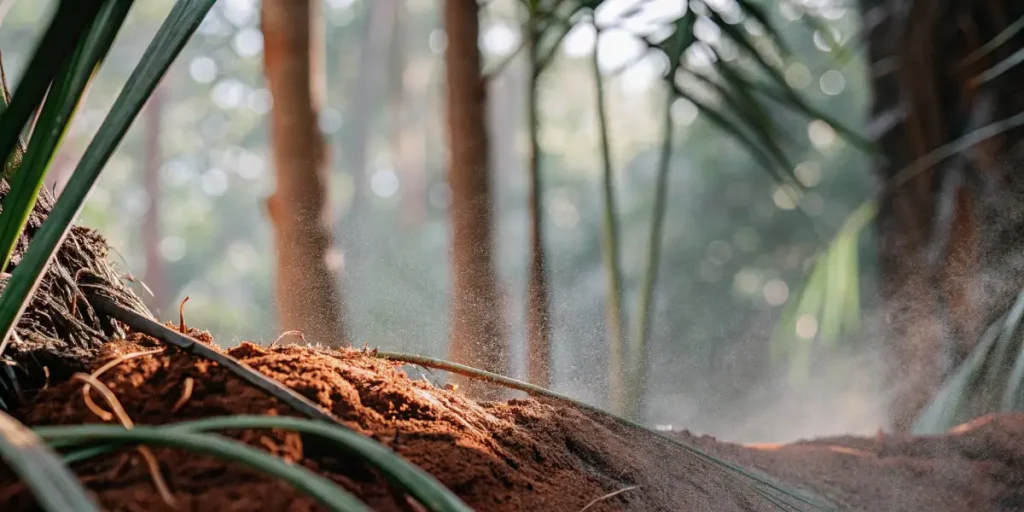
Importance of Nitrogen for Cannabis Plants
Nitrogen is a key nutrient for cannabis plants. It plays a vital role in their growth and development. When plants convert nitrate to ammonia effectively, they can utilize nitrogen more efficiently. This results in stronger, more resilient plants that can withstand various growing conditions.
For those new to growing cannabis, focusing on nitrogen management can make a big difference. By ensuring your plants can convert nitrate to ammonia, you’re setting them up for success. This means more lush foliage, better flowering, and ultimately, higher quality buds.
Effective nitrogen management also contributes to the plant’s ability to recover from environmental stressors. Whether it’s temperature fluctuations or pest pressures, well-nourished plants are better equipped to handle adverse conditions, ensuring continuous growth and productivity.
Furthermore, nitrogen is crucial for photosynthesis, as it’s a major component of chlorophyll. Adequate nitrogen levels enhance photosynthetic efficiency, which in turn supports robust plant growth and higher biomass accumulation.
Maximizing Nitrate to Ammonia Conversion in Cannabis
Maximizing nitrate to ammonia conversion in cannabis is all about creating the right environment. This includes providing the right nutrients, maintaining proper soil conditions, and ensuring your plants have access to the enzymes involved in nitrate reduction.
By focusing on these factors, you can improve the efficiency of the conversion process. This means your plants will have access to the nitrogen they need, leading to better growth and higher yields. It’s a practical approach that can benefit both novice and experienced growers.
Soil texture and composition can also influence the efficiency of nitrate to ammonia conversion in plants. Well-draining soils that maintain adequate moisture levels can facilitate nutrient uptake and enzyme activity, promoting optimal plant growth.
Besides to soil and nutrients, growers can explore the use of biostimulants. These substances can enhance enzyme activity and microbial interactions in the rhizosphere, further supporting the nitrate conversion process and overall plant health.
Practical Tips for Cannabis Growers
Start by ensuring your soil is rich in nutrients. This provides your plants with the necessary elements to convert nitrate to ammonia. Consider using organic fertilizers that release nutrients slowly, giving your plants a constant supply of what they need.
Monitor your plants closely. Look for signs of nitrogen deficiency, such as yellowing leaves or stunted growth. By catching these signs early, you can adjust your growing conditions to better support the conversion process.
Regular soil testing can help you keep track of nutrient levels and ensure your plants have an adequate supply of nitrogen. Adjusting fertilization practices based on test results can help maintain optimal nutrient availability throughout the growth cycle.
Additionally, consider using cover crops or green manures to enhance soil fertility naturally. These practices can improve soil structure and nitrogen content, providing a sustainable approach to support how plants convert nitrate to ammonia.

FAQs
Why is nitrate to ammonia conversion important for cannabis plants?
It’s vital because it allows plants to use nitrogen, a key nutrient. Without this conversion, plants can’t build proteins or other essential molecules. For cannabis growers, this means your plants won’t reach their full potential if they can’t convert nitrate to ammonia efficiently.
By ensuring your plants can perform this conversion, you’re setting them up for success. This is especially important for strains known for their high yields. Efficient conversion leads to stronger, healthier plants and better overall growth.
Knowing the process of how plants convert nitrate to ammonia also aids in diagnosing nutrient-related issues. Recognizing the symptoms of inefficient conversion can help growers take corrective actions promptly.
Moreover, efficient nitrate conversion is linked to better water use efficiency. Healthy nitrogen metabolism supports the plant’s ability to absorb and retain water, which is crucial for maintaining turgor and preventing drought stress.
What enzymes are involved in nitrate reduction?
The main enzymes involved are nitrate reductase and nitrite reductase. These enzymes facilitate the conversion of nitrate to ammonia. Nitrate reductase converts nitrate to nitrite, while nitrite reductase converts nitrite to ammonia.
For cannabis growers, ensuring your plants have access to these enzymes is crucial. It can make the difference between a thriving garden and one that’s struggling. By focusing on enzyme activity, you can improve your plants’ ability to convert nitrate to ammonia.
The activity of these enzymes can be influenced by external factors such as light and temperature. Ensuring adequate light exposure and stable temperature conditions can enhance enzyme function and the overall conversion process.
Additionally, certain soil amendments can promote the activity of enzymes involved in nitrate reduction. Incorporating materials rich in organic matter can stimulate microbial activity, indirectly supporting enzyme function and nitrate conversion in plants.
How can I improve nitrate to ammonia conversion in my cannabis plants?
Focus on providing the right nutrients and soil conditions. Use fertilizers that supply the necessary elements for conversion. Pay attention to your plants’ health and adjust conditions as needed to support efficient conversion.
Choose strains that are known for their ability to convert nitrate effectively. By selecting the right strains and providing optimal conditions, you can enhance the conversion process, leading to better growth and higher yields.
Regularly adjusting pH levels in your growing medium can also aid in optimizing nutrient availability and enzyme activity. Most cannabis plants thrive in slightly acidic to neutral pH, ensuring effective nitrate to ammonia conversion.
Furthermore, incorporating beneficial microbes through inoculants can enhance nutrient cycling and support the biochemical pathway of nitrate assimilation. These microbes can interact with plant roots to promote healthier growth and more efficient nitrogen metabolism.
How does ammonia biosynthesis in plant cells affect growth?
Ammonia biosynthesis in plant cells is crucial for building proteins. This process affects growth by providing the building blocks for new cells. When plants synthesize ammonia effectively, they grow stronger and more vigorously.
For cannabis growers, efficient ammonia biosynthesis means more robust plants. This can lead to better flowering and increased production. By focusing on this aspect of plant growth, you can improve the quality and quantity of your harvest.
Ammonia biosynthesis in plant cells also influences the synthesis of secondary metabolites. These compounds can enhance the plant’s defense mechanisms against pests and diseases, contributing to healthier and more resilient crops.
Moreover, the efficiency of ammonia biosynthesis is linked to overall plant metabolism. As plants build proteins and other macromolecules, they become more efficient in energy use, supporting sustained growth and development.
Are there specific cannabis strains that benefit more from efficient nitrate to ammonia conversion?
Yes, some strains are particularly responsive to efficient conversion. Strains like Strawberry Cough and Blue Dream are known for their growth potential when nitrate conversion is optimized. These strains can produce impressive yields when given the right conditions.
By choosing strains that benefit from efficient conversion, you can maximize your growing efforts. Whether you’re a novice or an experienced grower, focusing on nitrate to ammonia conversion can help you achieve better results with your cannabis plants.
These strains often require precise nutrient management to support their vigorous growth and high yield potential. Knowing their specific needs and adjusting your growing practices accordingly can enhance their performance.
Additionally, these strains may exhibit increased resilience to environmental stresses when nitrogen conversion is optimized. This adaptability can result in more reliable harvests and consistent quality across growing cycles.



